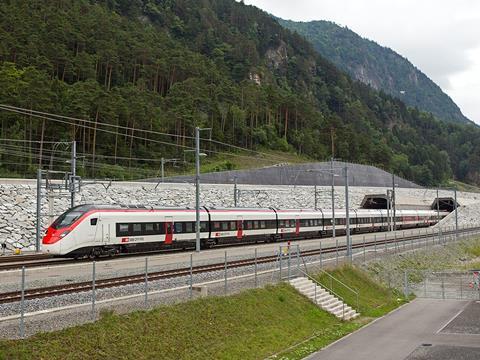You’ll agree with me that man-made railway tunnels and all tunnels, in general, are the most impressive engineering accomplishments by humans. From providing breathtaking experiences to enhancing our ability to travel across the world in the face of natural obstacles such as mountains and large bodies of water.
In this post, we’ll look at the 10 longest railway tunnels in the world.
The 10 longest railway tunnels in the world
- Gotthard Base Tunnel in Switzerland (length 57.1 kilometres)
- Seikan Tunnel in Japan (lenghth 53.9 kilometers)
- Channel Tunnel in France/United Kingdom (length 50.5 kilometres)
- Yulhyeon Tunnel in South Korea (Length 50.3 kilometres)
- Songshan Lake Tunnel in China (length 38.8 kilometres)
- Shenzhen Hong Kong Tunnel in China (length 35.655km)
- Lötschberg Base Tunnel in Switzerland (length 34.576km)
- New Guanjiao Tunnel in China (length 32.645km)
- Guadarrama Tunnel in Spain (length 28.418km)
- West Qinling Tunnel in China (length 28.236km)
1. Gotthard Base Tunnel

The Gotthard Base Tunnel is the longest railway tunnel in the world with a length of 57.1 kilometers. The tunnel also holds other titles. It is the world’s deepest traffic tunnel and the first flat, low-level route through the Alps, Switzerland. Opened in June 2016, the tunnel is part of the New Railway Link through the Alps (NRLA) project. It consists of a huge complex with two single-track tunnels at its core connecting Erstfeld (Uri) with Bodio (Ticino) and passing below Sedrun (Grisons).
The Gotthard Base Tunnel is referred to as a “base tunnel” because it bypasses most of the existing Gotthard railway line. The latter is a winding mountain route opened back in 1882 across the Saint-Gotthard Massif. The existing Gotthard railway line was operating at its capacity before the opening of the GBT.
Unlike the latter, the new base tunnel establishes a direct route usable by high-speed rail and heavy freight trains.
2. Seikan Tunnel

The Seikan Tunnel is a 53.9 km dual-gauge railway tunnel in Japan.
The railway tunnel, which is the second longest in the world, has a 23.3 km portion under the seabed of the Tsugaru Strait. The latter separates Aomori Prefecture on the main Japanese island of Honshu from the northern island of Hokkaido. Its track level is about 100 meters below the seabed and 240 meters below sea level.
Owing to these features, Seikan Tunnel is, therefore, not only the longest railway tunnel but also the second-deepest transport tunnel below sea level. Moreover, it has one of the longest undersea tunnel sections in the world.
The tunnel is part of the Hokkaido Shinkansen standard-gauge railway and the Kaikyō Line narrow-gauge railway of the Hokkaido Railway Company (JR Hokkaido)’s Tsugaru-Kaikyō Line.
3. The Channel Tunnel
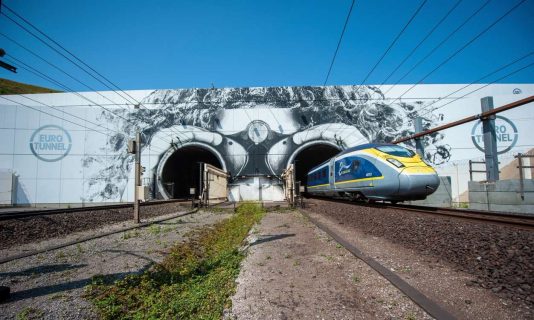
The Channel Tunnel is also known as the Chunnel. It is a 50.5-kilometre underwater railway tunnel. It connects Folkestone (Kent, England) and Coquelles (Pas-de-Calais, France) beneath the English Channel at the Strait of Dover. This is reportedly the only fixed link between the island of Great Britain and the European mainland.
At its lowest point, the Channel Tunnel is 75 metres deep below the sea bed and 115 metres below sea level. At 37.9 kilometres the tunnel has the longest underwater section of any tunnel in the world.
The Channel Tunnel, which carries high-speed Eurostar passenger trains, LeShuttle services for road vehicles as well as freight trains, is owned and operated by Getlink, formerly known as “Groupe Eurotunnel”.
4. Yulhyeon Tunnel
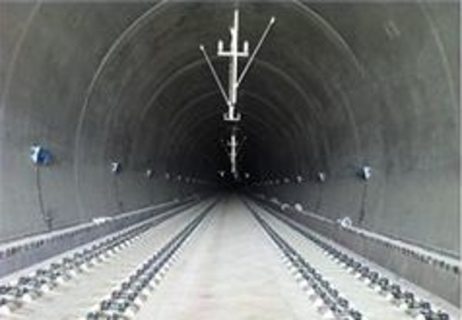
Opened in December 2016, this is a double-track railway tunnel in South Korea. It is the world’s fourth-longest railway tunnel at a length of 50.3 kilometres.
The Yulhyeon Tunnel is part of the 61.1-kilometre Suseo–Pyeongtaek high-speed railway. The latter connects Suseo station in the southeastern part of Seoul with the Gyeongbu high-speed railway. The tunnel takes up approximately 82% of the total length of the Suseo–Pyeongtaek high-speed railway.
Noteworthy, the Yulhyeon Tunnel was built using the New Austrian tunnelling method (NATM) and is designed for a maximum speed of 300 km/h. The average cruising speed within the tunnel is 240 km/h or its thereabouts. This is mainly due to the intermediate stop at Dongtan Station in the southern part of the tunnel.
5. Songshan Lake Tunnel

Songshan Lake Tunnel is the 5th longest railway tunnel in the world in addition to the longest of its kind in China. It spans a total of over 35 kilometres across that Dongguan Province and its construction was completed back in 2016.
The tunnel is part of the Dongguan–Huizhou intercity railway, which is also known as the Guanhui intercity railway as well as the Guanhui City Railway. The latter is a regional railway in Guangdong Province, China. It connects the cities of Dongguan and Huizhou in the Pearl River Delta (PRD).
6. Shenzhen Hong Kong Tunnel
The 35.655 kilometres long tunnel is part of the Guangzhou–Shenzhen–Hong Kong Express Rail Link (XRL) or the Guangshengang XRL unofficially.
Officially known as the Beijing–Guangzhou–Shenzhen–Hong Kong high-speed railway or the Guangzhou–Shenzhen–Hong Kong section, the railway is a high-speed railway line that connects Beijing and Hong Kong (Kowloon) through Guangzhou and Shenzhen.
The first phase of the railway, Shenzhen North–Guangzhou South, commenced operation in December 2011. In December 2015 the railway extended its services to the city centre of Shenzhen at Futian in a second phase while the third and final phase was opened to the public on September 2018. The final phase connects Shenzhen-Futian to Hong Kong (West Kowloon).
7. Lötschberg Base Tunnel(LBT)
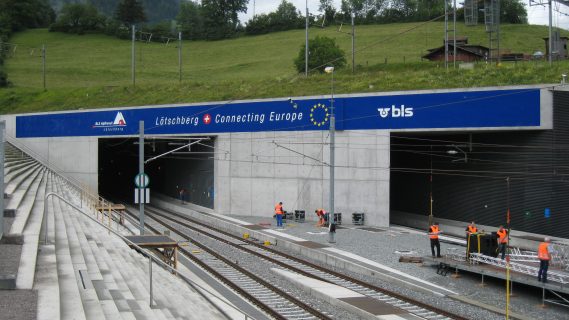
The Lötschberg Base Tunnel (LBT) is a railway base tunnel on the BLS AG’s Lötschberg line that runs through the Bernese Alps of Switzerland, approximately 400 meters below the current Lötschberg Tunnel. The LBT is 34..57 kilometres long. connecting Raron, Valais, and Frutigen, Berne.
Its construction started in 1999 and made progress in 2005. The first train operations started in December 2007, and a ceremony to celebrate its completion was held in June 2007.
8. New Guanjiao Tunnel
New Guanjiao Tunnel is the second line of the Qinghai-Tibet Railway in Guanjiao Mountain, Qinghai Province.
The tunnel is a double-track rail with two bores and it is the longest railway tunnel in China at 32.645 kilometres in length. It was built to accommodate two single-track, parallel tunnels travelling up to 160 kph. The tunnel was drilled at a height of more than 3,300 meters above sea level, amid challenging geological circumstances beginning in 2007. Work on the project was finished in April 2014 and the tunnel was inaugurated on December 28, 2014.
9. Guadarrama Tunnel
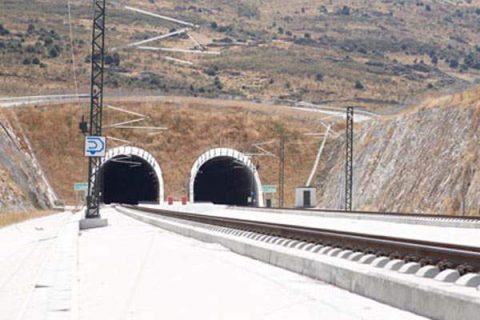
Guadarrama Tunnel is a crucial section of the Madrid-León high-speed rail route in Spain that spans the Sierra de Guadarrama.
With two parallel tubes, i.e. the western and the Eastern tubes, the tunnel is the largest and longest in Spain. The western tube is 28,407m long while the eastern tube is 28, 418m long.
This tunnel was launched for use on December 2007 and it has been used by the AVE high-speed passenger trains. The tunnel allows the movement of trains between the capital and some of the major cities in the north and north-western parts of Spain at a speed of up to 350km/h.
10. West Qinling Tunnel
This tunnel is in the midst of the Lanzhou-Chongqing railway that crosses the Qinling. It is a 28. 236 kilometres long dual-bore railway tunnel in the Gansu province of northwest China’s Wudu District. It is slightly shorter than the New Guanjiao Tunnel and is China’s second-longest railway tunnel.
Using drill and blast and tunnel boring machines (TBM), the building project began in August 2008 and lasted between five months and five years.
